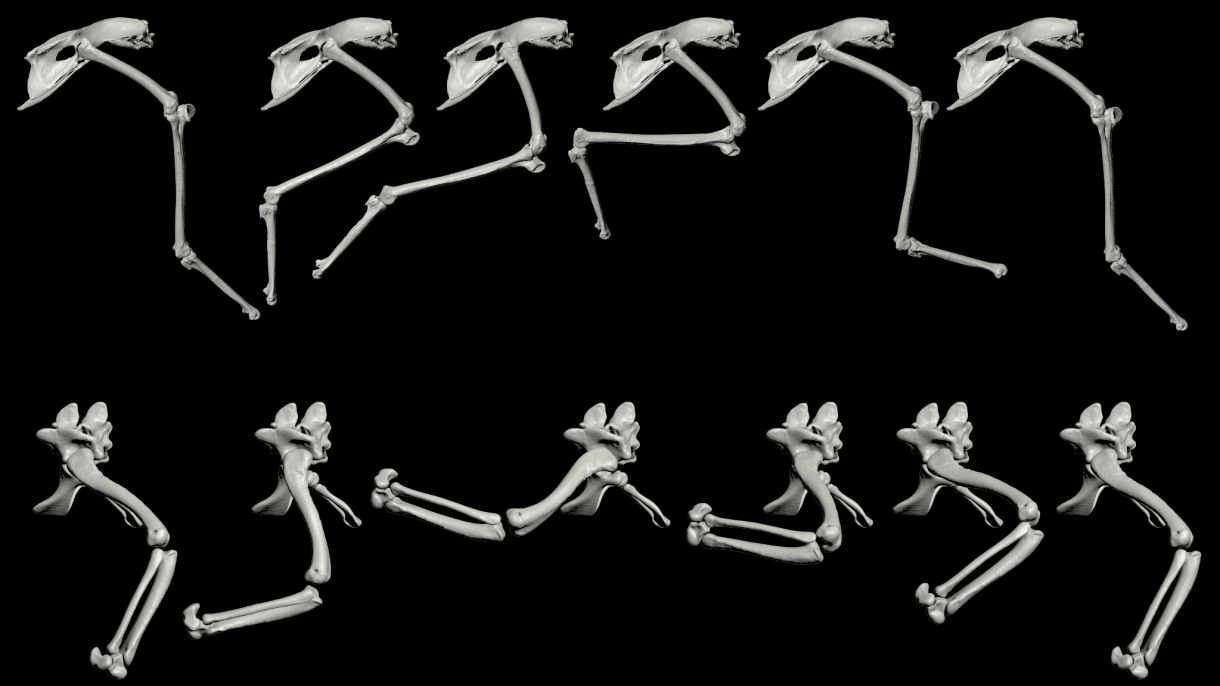
PROVIDENCE, R.I. [Brown University] — Paleontologists have made great strides in understanding how extinct animals like dinosaurs walked, ran, swam and flew when they were alive — but much about the mechanics of how different species moved remains uncertain. A new study led by researchers at Brown University offers a new perspective on this long-standing conundrum.
The research, published on Monday, Feb. 8, in Proceedings of the National Academy of Sciences, used an innovative 3D imaging technology developed at Brown called X-ray Reconstruction of Moving Morphology — or XROMM — to develop a method that could unlock new insights into how dinosaurs and other animals moved.
“By combining the latest technology for studying joint motion with unprecedented amounts of joint pose data, we’ve uncovered surprising new information that will improve reconstructions of locomotion in extinct animals,” said Armita Manafzadeh, a Ph.D. candidate in ecology and evolutionary biology at Brown and lead author of the research.
And improving the ability for scientists to study animal biomechanics is important, Manafzadeh says, because knowledge of how individual species moved can be used to advance understanding of major evolutionary transitions and transformations, “like how animals with backbones came out of the water and started walking on land, how they went from walking on four legs to two, and how flight evolved.”
Traditional methods for studying how extinct animals walked rely on process of elimination. Fossil bones are fit together and manipulated to determine a joint’s mobility — all of the poses that can be assumed without the bones bumping into each other or coming apart. But because that approach only rules out how joints couldn’t have moved, scientists must then turn to other data sources — musculoskeletal models, trackway measurements, robotic simulations — to figure out how an animal’s joints realistically moved in life. In short, the approach has its limitations.
To determine whether joint mobility data might actually be more informative than paleontologists have tended to assume, Manafzadeh worked with two colleagues: Stephen M. Gatesy, a Brown professor of biology and co-director of the XROMM Technology Development Project; and Robert Kambic, who earned his Ph.D. from Brown as a student in Gatesy’s lab and is now at the Center for Movement Studies at the Kennedy Krieger Institute and the department of neuroscience at Johns Hopkins University School of Medicine.
Using XROMM’s 3D imaging technology, the researchers designed a study involving two living animals, the helmeted guineafowl and the American alligator, that are closely related to extinct dinosaurs. The researchers captured X-ray videos of the animals walking and having their limbs manipulated, took CT scans of the skeletons, and then used XROMM to measure nearly 600,000 joint poses. The researchers plotted these poses on three-dimensional joint mobility maps.
"how" - Google News
February 09, 2021 at 03:45AM
https://ift.tt/3jwUoMf
To figure out how dinosaurs walked, start with how they didn't - Brown University
"how" - Google News
https://ift.tt/2MfXd3I
https://ift.tt/3d8uZUG
Bagikan Berita Ini















0 Response to "To figure out how dinosaurs walked, start with how they didn't - Brown University"
Post a Comment